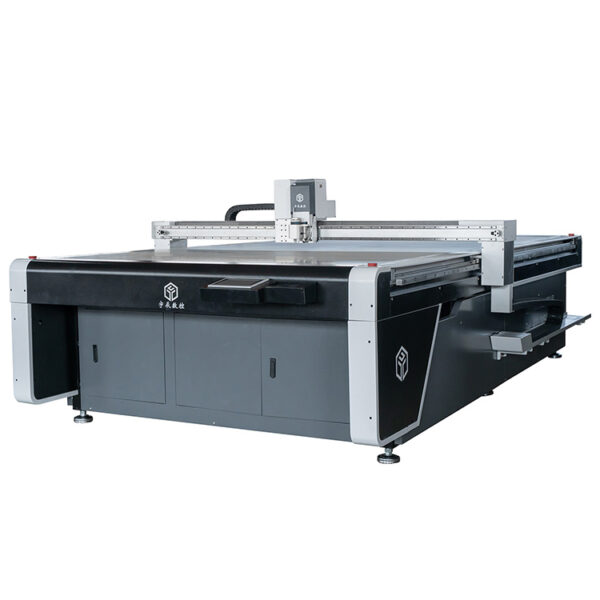How does automation support the implementation of lean manufacturing principles in automatic leather cutting machine?
Automation plays a significant role in supporting the implementation of lean manufacturing principles in an automatic leather cutting machine. Lean manufacturing focuses on eliminating waste, improving efficiency, and maximizing value for the customer.
Here’s how automation aligns with and supports lean manufacturing in the context of an automatic leather cutting machine:
- Reduced Waste:
- Automation minimizes material waste by optimizing the cutting process. Advanced nesting algorithms and pattern recognition systems ensure efficient use of leather, reducing scrap and material remnants.
- Efficient Production Flow:
- Automated leather cutting machines contribute to a smoother and more efficient production flow. The continuous and consistent operation of the machine eliminates bottlenecks and interruptions, supporting a lean production process.
- Quick Changeovers:
- Automation allows for quick changeovers between different cutting patterns. This flexibility is crucial in lean manufacturing, where the ability to adapt rapidly to changing production requirements and customer demands is essential.
- Error Reduction:
- Automation reduces the likelihood of errors in the cutting process. Precision cutting tools, digital pattern recognition, and real-time monitoring minimize mistakes, ensuring that each cut is accurate and adheres to the specified design.
- Optimized Labor Efficiency:
- By automating repetitive and labor-intensive tasks, the automatic leather cutting machine optimizes labor efficiency. This aligns with lean principles by eliminating non-value-added activities and allowing skilled operators to focus on higher-value tasks.
- Continuous Improvement:
- Automation facilitates data collection and analysis, providing insights into machine performance and production metrics. This data-driven approach supports continuous improvement initiatives, a key aspect of lean manufacturing.
- Inventory Reduction:
- Automated cutting machines contribute to just-in-time (JIT) manufacturing by producing components as needed. This helps in minimizing inventory levels, reducing holding costs, and aligning with the lean principle of efficient inventory management.
- Quality Control Integration:
- Automated systems often include built-in quality control measures, such as vision systems and sensors. This ensures that each cut meets quality standards, reducing the need for rework and aligning with the lean goal of producing defect-free products.
- Pull System Implementation:
- Automation supports the implementation of a pull system in manufacturing. Rather than pushing products through the production process, automatic leather cutting machine a pull system responds to customer demand, and automated processes can be synchronized accordingly.
- Energy Efficiency:
- Some modern automated machines are designed with energy-efficient features. This not only aligns with sustainability goals but also contributes to lean manufacturing principles by optimizing resource utilization.
- Cross-Training Opportunities:
- Automation allows operators to be cross-trained for different tasks within the production process. This flexibility supports lean manufacturing by creating a more versatile and adaptable workforce.
- WIP (Work-in-Progress) Reduction:
- By producing components just in time and minimizing batch sizes, automated leather cutting machines contribute to reducing work-in-progress inventory, aligning with the lean manufacturing principle of flow.
- Visual Management:
- Automation systems can integrate visual management tools, such as dashboards and real-time monitoring displays. This enhances visibility into the production process, enabling better decision-making and problem-solving.
- Standardized Work Processes:
- Automation helps standardize work processes, ensuring that each cut is executed consistently according to predetermined standards. Standardization is a key component of lean manufacturing for achieving efficiency and quality.
- Elimination of Unnecessary Movement:
- Lean manufacturing aims to eliminate unnecessary movement and transportation of materials. Automated leather cutting machines can be integrated into a centralized production layout, reducing the need for excessive material handling.
By incorporating automation into the leather cutting process, manufacturers can create a more streamlined, efficient, and responsive production system that aligns with the principles of lean manufacturing. The focus on waste reduction, continuous improvement, and optimized workflows is enhanced by the capabilities of automated cutting machines.
